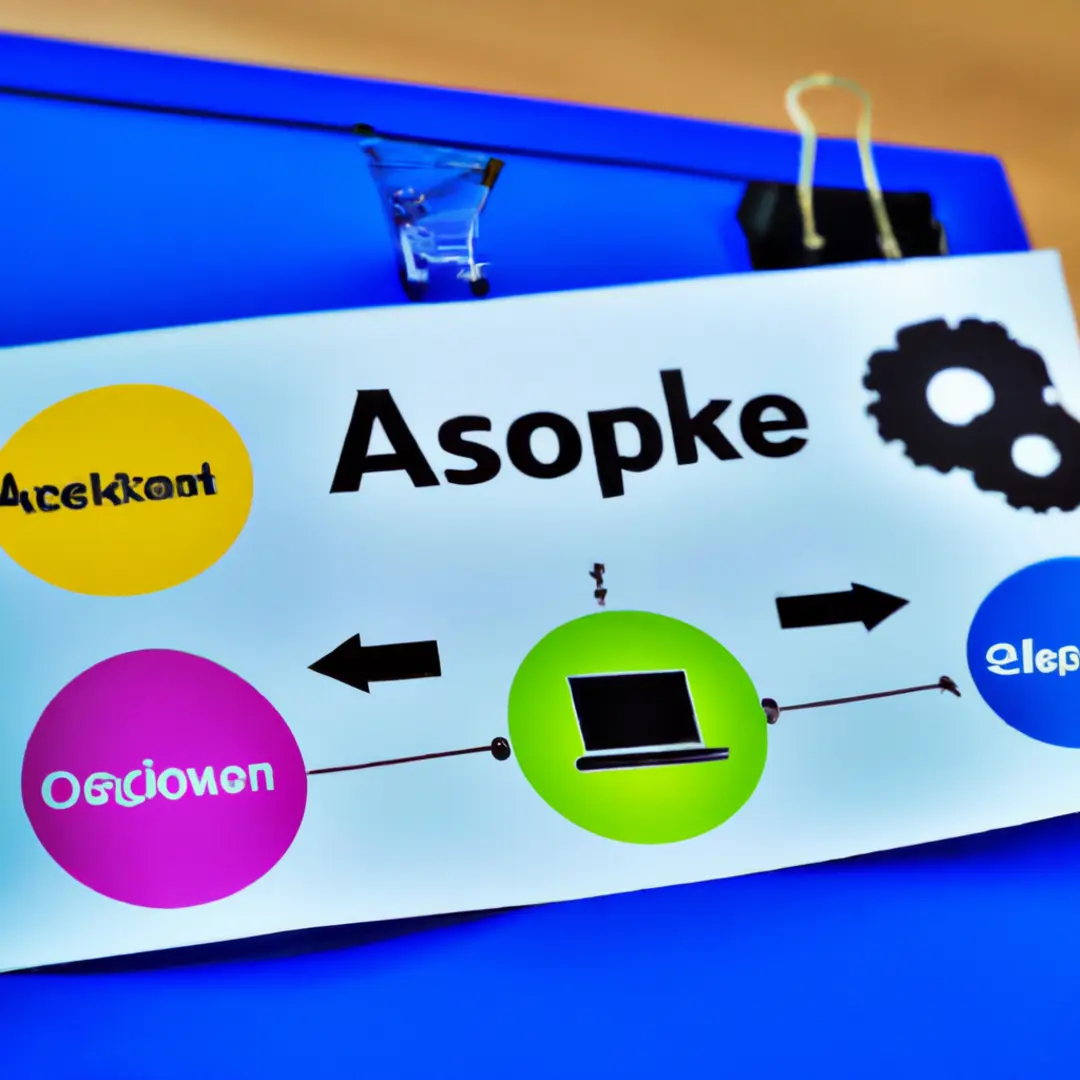Table of contents
- An Introduction to the Concept of Business Models
- Catering to Various Industry Needs: Different Types of Business Models
- Engaging the Right Elements: Building a Successful Business Model
- Cracking the Code with Business Model Frameworks
- Emerging Digital and Technology-Driven Business Models
- Driving Success: Examining Examples of Successful Business Models
- Fueling Innovation: Unconventional and Niche Business Models
- Scaling and Reinventing: Adapting Business Models for Growth
- Analyzing Business Model Effectiveness
- A Practical Guide to Building a Business Model
- Ending Thoughts
An Introduction to the Concept of Business Models

A business model is the backbone of any successful enterprise, designed to outline how organizations create, deliver, and capture value. Essentially, it is a blueprint that encompasses various elements working cohesively to define how a business operates, the kind of value it generates, and its revenue streams. Having a well-outlined business model paves the way for success and sustainability in any venture. Your business model description, therefore, needs to be clear and comprehensive.
Catering to Various Industry Needs: Different Types of Business Models

Business models are not a one-size-fits-all entity. Different industries require different models, and a company’s business model is often shaped by its specific goals and structure. Some commonly used models include:
- Business Model Amazon: A Business powerhouse led by e-commerce
- Business Model Uber: A game-changer in the ride-sharing industry
- Business Model Starbucks: The templet for cafe dominance worldwide
- Business Model Franchise: A proven success strategy championed by McDonald’s
The Pivotal Role of Business Models in Entrepreneurship
Our increasing appreciation of entrepreneurship in recent years has underscored the critical function of business models. These models serve as the scaffold that aids entrepreneurs to bring their revolutionary ideas to life, fueling the creation of sustainable ventures. Entrepreneurs can use a well-designed business model as a roadmap, helping them identify potential customers, understand their needs, and provide distinctive value. Moreover, it assists in outlining revenue streams, cost structures, and crucial partnerships, forming a comprehensive business model description.
Engaging the Right Elements: Building a Successful Business Model

A successful business model is composed of various key elements, each playing an integral role in the business framework.
Value Proposition
value proposition is what sets your company apart, focusing on the unique value it brings to customers. It outlines the benefits of the product or service, the problems it solves, and the unique advantages it provides over competitors.
Target Customer Segments
Identifying target customer segments is vital for any business. By understanding your customers – based on either demographics, psychographics or other factors, you can mould your offerings to cater to their specific needs and preferences.
Channels to Reach Customers
Channels in a business model refer to the various means of reaching and engaging with customers. Businesses can use multiple channels like online platforms, physical stores, direct sales or distribution partnerships, and choosing the right ones contributes significantly to an effective business model description.
Customer Relationships
In a business model, customer relationships are the strategies employed by businesses to build, manage, and maintain relationships with customers for longer retention. Strategies can include personalized customer services, loyalty programs, or regular check-ins to ensure customer satisfaction.
Revenue Streams
Revenue streams form the financial heart of the business model, representing the different sources from which a business earns income. These could include sales of products, subscription fees, licensing agreements or ad revenues. Understanding and diversifying revenue streams is vital for building a stable and growing business.
Key Resources
Key Resources are the fundamental assets required for a business to operate successfully. These can include physical infrastructure, intellectual property, human capital, technological resources, and much more. Businesses must identify and leverage these resources to accomplish their objectives.
Key Activities
The heartbeat of any business model lies in Key Activities, representing the core functions and processes a business undertakes to deliver value to customers. These could encompass everything from product development to marketing, distribution, and customer support.
Key Partnerships
Key Partnerships can help a business model because they allow access to new markets, enable sharing of resources, or can bring unique expertise. Such alliances can contribute to the overall success of a venture.
Cost Structure
Cost structure refers to a mixture of various expenses needed to operate a business. It can include manufacturing costs, marketing expenses, or technology investments—a clear understanding of cost structure aids in identifying areas for optimization to boost profitability.
Cracking the Code with Business Model Frameworks

No comprehensive business model description is complete without a discussion on well-established frameworks, which provide entrepreneurs with a structured roadmap for their business models.
Business Model Canvas
The Business Model Canvas is a well-renowned one-page document framework that assists with the visualization and analysis of a business model. It defines nine critical building blocks that take into account the different aspects needed to develop a robust business model.
The Lean Startup Methodology
The Lean Startup Methodology emphasizes an iterative approach to business model development. Advocating for continuous validation into the market, rapid experimentation, and data-backed decision making help construct a successful and scalable business model.
Value Proposition Canvas
The Value Proposition Canvas works in conjunction with the Business Model Canvas, focusing specifically on refining the unique value a business brings to a customer. This Canvas aids entrepreneurs to understand customer needs and tailor their value proposition accordingly, maximizing the value created.
Emerging Digital and Technology-Driven Business Models

The digital revolution has brought new types of business models, powered by technology and tailored to the demands of a rapidly changing commercial landscape. Here are a few exemplars:
Platform Business Models
Platform business models work by facilitating the interaction between different user groups and allowing the exchange of goods, services, or information. These platforms leverage network effects to generate value and provide robust user experiences.
Subscription Business Models
The subscription business model thrives on recurring provision of products or services against regular subscription fees. The model fosters customer loyalty while providing a predictable and recurring revenue stream.
E-commerce Business Models
A business model driving major disruption in how goods and services are bought, e-commerce business models focus primarily on online sales. Offering global reach and reducing overhead costs, such models have proven successful by businesses such as Amazon and Alibaba.
Freemium and Advertising-Based Business Models
The Freemium model allows businesses to offer basic services for free, charging for premium features. Attracting large volumes of users, it aims to convert a part of them into paying customers. Advertising-based models work alongside by displaying targeted ads to users, generating a steady stream of revenue.
Driving Success: Examining Examples of Successful Business Models

Insight into the framework of opportunities can be gleaned from successful business models. Here we delve into a few examples:
Business Model Amazon: Reigning the E-commerce Sphere
Amazon’s business model revolves around competitive pricing, a vast selection of products, and an unbeaten commitment to improving customer experience. It leverages customer data for personalized recommendations and prompt, reliable delivery, making it an e-commerce leader globally.
Business Model Uber: Steering the Wheel of Ride Sharing
Uber’s disruptive business model connects riders with drivers, offering convenient, economical transportation services. Uber demonstrates optimally how technology can enhance user experience and efficiency.
Business Model Starbucks: Brewing Success in the Cafe Sphere
Starbucks’ dominance in cafes worldwide boils down to its unique business model: creating a distinct and welcoming coffeehouse experience, serving premium quality products, strategic store locations, and continuous innovation in offerings.
Business Model Franchise: McDonald’s Recipe for Global Domination
The scalable model of franchise business allows individuals to run their McDonald’s outlets, benefitting from the brand’s reputation, standardized procedures, and franchisor support. This model has helped McDonald’s grow into one of the largest fast-food chains globally.
Fueling Innovation: Unconventional and Niche Business Models

Some business models do not conform to traditional notions, taking on challenging industry verticals or focusing on aspects beyond profitability. Here are a few examples:
Business Model Sustainability: The Pursuit of Profit and Purpose
Sustainable business models underscore the fact that businesses can turn a profit while also acknowledging social, environmental and ethical considerations. Aiming at conscious consumers, businesses like Patagonia and TOMS have successfully adapted sustainability into their models.
Business Model Healthcare: Embracing Patient-Centricity
The healthcare business model is rapidly moving toward a patient-centered approach, prioritizing personalized care and technology-enabled solutions to promote better health outcomes. From HealthTech startups to telehealth platforms, the healthcare industry is experiencing a significant transformation.
NPO Business Model: Navigating the Balance between Mission and Margin
Non-profit organizations (NPOs) juggle mission-driven goals with fiscal sustainability. Their business model typically relies on a mix of grants, donations, and revenue-generating activities to fund their programs, balancing social impact with longevity.
Emerging Business Models in IoT and AI
Emerging technologies like the Internet of Things (IoT) and Artificial Intelligence (AI) are paving the way for innovative business models. Companies can leverage these technologies to create groundbreaking products, enhance customer experience, and optimize operations, impacting the future of numerous industries.
Scaling and Reinventing: Adapting Business Models for Growth

Scaling Business Model – Guiding Principles and Pitfalls
Scaling a business model involves growing a venture to reach a broader customer base, diversify offerings, or venture into new markets. However, scaling presents its challenges, requiring careful planning, strategized resource allocation, and environment adaptation.
Embracing Change: Business Model Reinvention
Business model reinvention involves adjusting or transforming the existing model to meet changing market dynamics, technology advancements, or consumer preferences. Businesses need to continually innovate and experiment to stay relevant.
Adapting Business Models in Response to Market Changes
Changes in the market—be it economic shifts, policy alterations, or emerging technologies—could necessitate alterations. Companies need to proactively identify potential opportunities or threats and adjust their models accordingly to maintain success. Adaptability is a must in an ever-changing business landscape.
Analyzing Business Model Effectiveness

Assessing the viability of a business model involves evaluating metrics and indicators. By monitoring these indicators, businesses can make informed business decisions and maximize their success.
Business Model Viability: Key Assessment Metrics
Evaluating a business model’s viability involves assessing growth rates, profitability, cost per customer acquisition, customer lifetime value, and market share. By closely monitoring these indicators, companies can effectively gauge their business model’s success.
Understanding Business Model Economics
Business model economics involves understanding the financial implications of one’s model. It involves a close analysis of revenue streams, cost structure, pricing strategies, and profitability. This understanding allows businesses to optimize their model, maximize financial performance and create value.
Gaining Competitive Edge through Business Model Innovation
Business model innovation can provide a crucial competitive edge by differentiating in value proposition, the customer experience, or operational efficiency, setting a business apart in a crowded marketplace.
A Practical Guide to Building a Business Model

Developing a comprehensive business model description incorporates several steps, which include researching the market, understanding customer needs, defining the value proposition, and aligning various aspects to form a coherent model.
Business Model Process
Building a business model is a systematic process that involves researching your market, understanding your customers’ needs, designing a value proposition, and aligning several elements to create a compelling model. This process guides entrepreneurs efficiently through the process, fostering the creation of robust business models.
Business Model Tools and Software
With various resources available, developing, visualizing, and analyzing business models has never been easier. These tools, like the Business Model Canvas software or online platforms, simplify the process, promote collaboration, and facilitate rapid iteration.
Developing a Comprehensive Business Model Proposal
A business model proposal serves as a presentation document that communicates the model to stakeholders, potential investors, or partners. A detailed proposal should cover the value proposition, target markets, revenue streams, cost structures, and potential growth.
Ending Thoughts

Building a successful business model involves understanding your target market, identifying customer needs, and devising a strategy that creates unique value. The business model is a significant element driving the venture. By understanding its key aspects, monitoring emerging trends, and adapting to market changes, it becomes easier to develop resilient models for success in a dynamic business environment.


